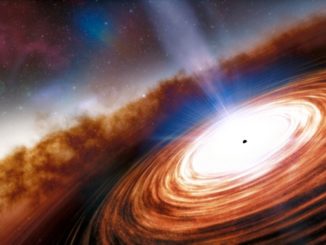
On 14 August 2019, gravity waves rippled through the solar system that were generated during the merger of a 23 solar mass black hole and a much lighter 2.6 solar mass companion. Researchers with the Advanced LIGO and Advance Virgo gravity wave observatories said the lighter companion is either the least-massive black hole ever detected or the heaviest neutron star.
Before the detection, the heaviest neutron star known was one with no more than 2.5 times the mass of the Sun and the lightest black hole weighed in at about five solar masses. A major question mark has been what, if anything, inhabits the mass gap between neutron stars and black holes?
“We’ve been waiting decades to solve this mystery” said Vicky Kalogera, a professor at Northwestern University. “We don’t know if this object is the heaviest known neutron star, or the lightest known black hole, but either way it breaks a record.”
Added co-author Patrick Brady, a professor at the University of Wisconsin and the LIGO Scientific Collaboration spokesperson: “This is going to change how scientists talk about neutron stars and black holes. The mass gap may in fact not exist at all but may have been due to limitations in observational capabilities. Time and more observations will tell.”
The observed merger, known as GW190814, produced a final black hole with about 25 times the mass of the Sun. More than half a solar mass was converted into energy — gravitational waves — during the merger. But before the merger, the masses differed by a factor of nine, the most extreme mass ratio yet seen in a gravity wave event.
GW190814 Artistic Interpretation from Alex Andrix on Vimeo.
“It’s a challenge for current theoretical models to form merging pairs of compact objects with such a large mass ratio in which the low-mass partner resides in the mass gap,” said Kalogera. “This discovery implies these events occur much more often than we predicted, making this a really intriguing low-mass object.”
Unlike a recent neutron star merger that was observed in both gravitational waves and electromagnetic radiation – light – the August 2019 event was not seen by ground- or space-based telescopes. The merger was six times farther away than the neutron star event, making it more difficult to detect. If the smaller object was, in fact, a black hole, no light would be expected. If it was a massive neutron star it might have been consumed in one lump by its much more massive companion, not giving off any light in the process.
“I think of Pac-Man eating a little dot,” said Kalogera. “When the masses are highly asymmetric, the smaller neutron star can be eaten in one bite.”
Researchers plan to stay on the lookout for similar mergers to find out whether such “mass-gap” companions represent a new population of compact bodies.



